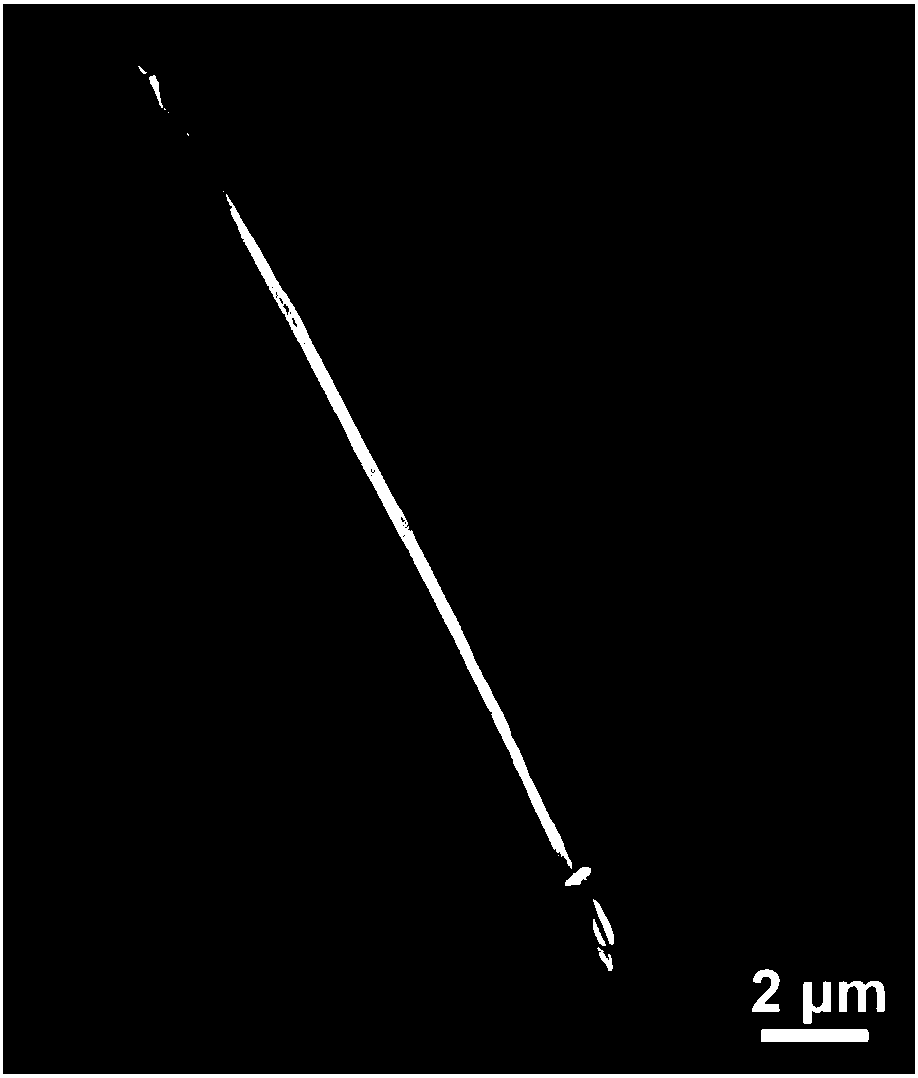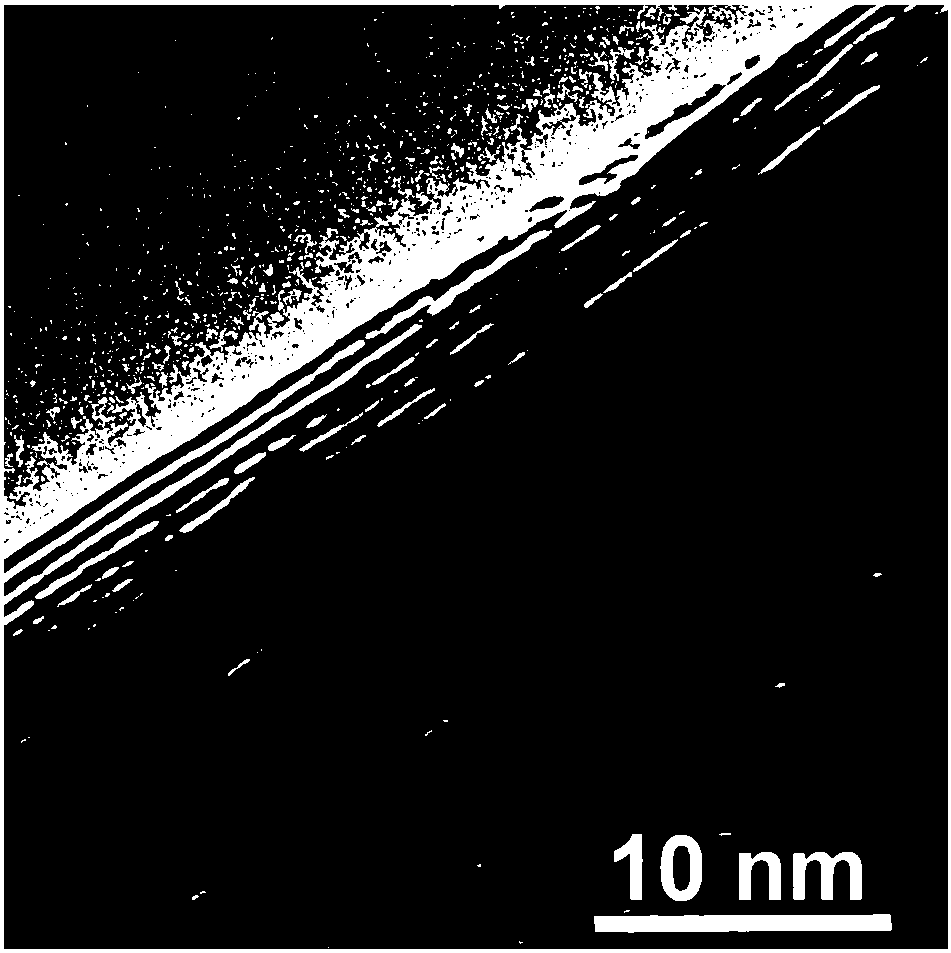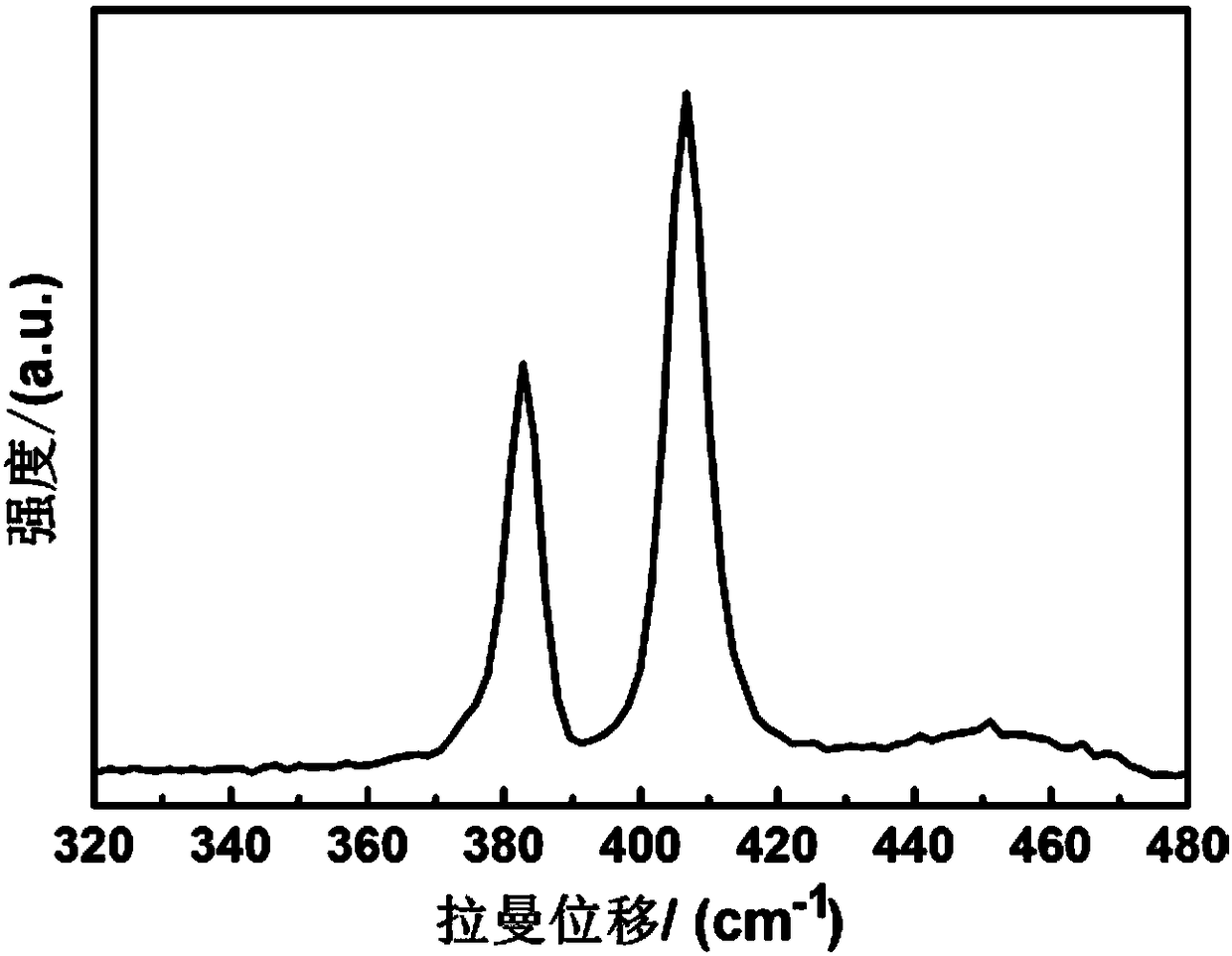Two-dimensional material nanometer roll as well as preparation method and application thereof
A technology of two-dimensional materials and nanoscrolls, applied in nanotechnology, nanocarbon, and nanotechnology for materials and surface science, can solve the problems of lack of high-yield preparation methods, properties and application research obstacles, and achieve synthesis costs Low cost, short response time, simple and flexible operation
- Summary
- Abstract
- Description
- Claims
- Application Information
AI Technical Summary
Problems solved by technology
Method used
Image
Examples
Embodiment 1
[0087] Fabrication of molybdenum disulfide nanoscrolls on silicon (surface-covered silica) substrates
[0088] (1) Preparation of ethanol aqueous solution: Measure 2 ml of ethanol and 1 ml of secondary water respectively, mix them, and prepare an ethanol aqueous solution with a volume ratio of 2:1.
[0089] (2) Preparation of molybdenum disulfide nanoscrolls: drop-coat the ethanol solution in (1) onto the surface of ultra-thin molybdenum disulfide deposited on the silicon substrate or immerse molybdenum disulfide in the aqueous solution, and take it out after 5 minutes.
[0090] (3) Preparation of composite molybdenum disulfide nanorolls: 1 nm-thick copper phthalocyanine was deposited on the surface of the ultra-thin molybdenum disulfide film by organic evaporation, and then soaked in ethanol aqueous solution in (1) for 30 minutes and then taken out.
[0091] Results Molybdenum disulfide nanorolls N1 and composite molybdenum disulfide nanorolls N2 loaded with copper phthalocya...
Embodiment 2
[0100] Fabrication of tungsten disulfide nanoscrolls on silicon substrates (surface covered with silica)
[0101] The same method as in Example 1 was used to prepare tungsten disulfide nanoscrolls, except that a methanol aqueous solution with a volume ratio of 5:1 was used.
[0102] Results Tungsten disulfide nanoscrolls N3 were prepared.
[0103] Morphological characterization of tungsten disulfide nanovolume N3:
[0104] Figure 8 Scanning electron micrographs of the prepared tungsten disulfide nanorolls, it can be seen from the figure that the tungsten disulfide nanorolls have a rod-like, tightly coiled shape, with a length between 0.1-150 μm and an outer diameter of 10-500 nanometers Between, the diameter of the inner hollow layer is between 2-100nm.
[0105] Figure 9 This is a high-resolution transmission electron micrograph of the prepared tungsten disulfide nanoscrolls, and the layer spacing is about 0.63 nm.
Embodiment 3
[0107] Fabrication of molybdenum diselenide nanoscrolls on a silicon substrate (surface covered with silicon dioxide)
[0108] The same method as in Example 1 was used to prepare tungsten disulfide nanoscrolls, except that an aqueous ethanol solution with a volume ratio of 3:1 was used.
[0109] Results Molybdenum diselenide nanoscrolls N4 were prepared.
[0110] Morphological characterization of molybdenum diselenide nanovolume N4:
[0111] Figure 10 Scanning electron microscope photographs of molybdenum diselenide nano-rolls prepared for , it can be seen from the figure that the tungsten disulfide nano-rolls have a rod-like, tightly coiled shape, with a length between 0.1-100 μm and an outer diameter of 10-200 Between nanometers, the diameter of the inner hollow layer is between 5-60nm.
[0112] Figure 11 This is a high-resolution transmission electron micrograph of the prepared molybdenum diselenide nanoscrolls, with a layer spacing of about 0.65 nm.
PUM
| Property | Measurement | Unit |
|---|---|---|
| Length | aaaaa | aaaaa |
| Layer spacing | aaaaa | aaaaa |
| Length | aaaaa | aaaaa |
Abstract
Description
Claims
Application Information
 Login to View More
Login to View More - R&D
- Intellectual Property
- Life Sciences
- Materials
- Tech Scout
- Unparalleled Data Quality
- Higher Quality Content
- 60% Fewer Hallucinations
Browse by: Latest US Patents, China's latest patents, Technical Efficacy Thesaurus, Application Domain, Technology Topic, Popular Technical Reports.
© 2025 PatSnap. All rights reserved.Legal|Privacy policy|Modern Slavery Act Transparency Statement|Sitemap|About US| Contact US: help@patsnap.com



